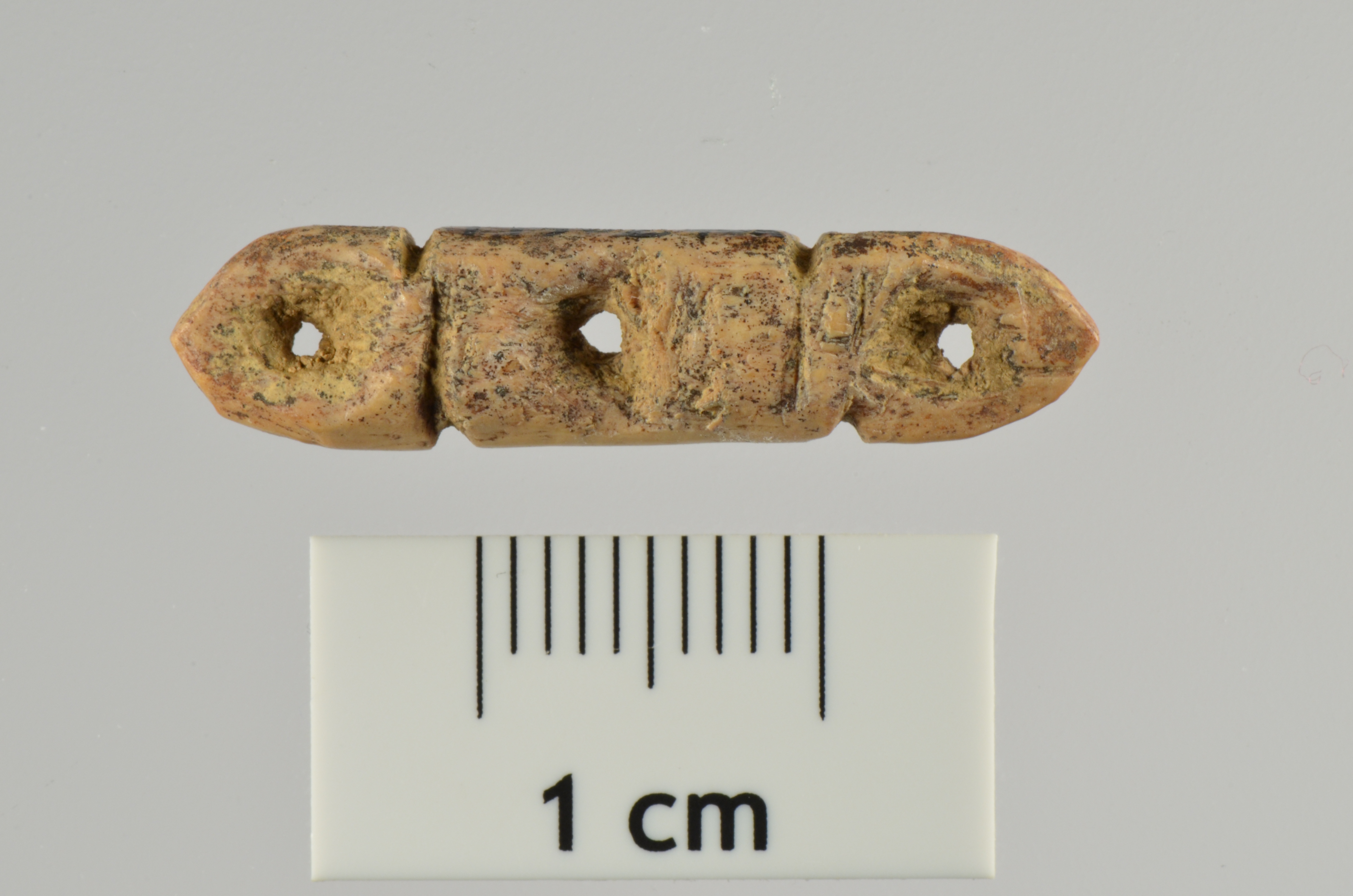News
03.08.2017
Beads from the Ice Age were a symbol of group identity
The University of Tübingen and the Museum of Prehistory Blaubeuren present 42,000-year-old personal ornaments made from mammoth ivory which only appears to have been made and worn on the Swabian Jura
Even 42,000 years ago jewelry was worn as an expression of group identity. Scientists from the University of Tübingen and the Senckenberg Centre for Human Evolution and Palaeoenvironment (HEP) at the University of Tübingen have found beads made from mammoth ivory, which so far only appear on the Swabian Jura, in the UNESCO world heritage caves of the Ach Valley and Lone Valley. On the site of Hohle Fels near Schelklingen in the Ach Valley, beads were also discovered which seem to be entirely unique for this cave. On 28 July 2017, Professor Nicholas Conard and his team presented new finds from the excavation 2016 at the Museum of Prehisotry Blaubeuren (urmu) – including 40 items which is an unusually large find.
Professor Conard is also the scientific director of the urmu, where the jewelry is now “Find of the year 2017”. A scientific article on the finds was published on July 28 in the journal Archäologische Ausgrabungen Baden-Württemberg by Landesamt für Denkmalpflege Baden-Württemberg.
Double perforated bead made from mammoth ivory – this form is only known from the World Cultural Heritage cave sites of the Swabian Jura. Photo: Hildegard Jensen/University of Tübingen |
|
The archeological excavations in the Hohle Fels near Schelklingen provide fascinating finds from the Upper Paleolithic each year. Numerous personal ornaments were excavated last year from the Aurignacian layers which date between 42,000 and 34,000 years.
"These jewelry pieces are important in the evolution of our kind: Apart from art and musical instruments, they document the earliest jewelry finds in three-dimensional forms made from ivory as symbolic artifacts. They underline the common cultural and social unity of the people of the Ach Valley and Lone Valley who have consistently produced new forms – possibly as an expression of competition with the Neanderthals or as a reaction to the radical changes in the environment at that time,” says Conard. “And we can even draw conclusions from these findings about social ideas during this first epoch of modern humans in Europe.”
For example, archeologists from the University of Tübingen have excavated hundreds of double perforated pieces made from mammoth ivory in the caves of the Ach Valley and the Lone Valley. They are thick in the middle and flat at the ends on both sides. The holes were made by drilling with a fine flint tool or by repeated incision. Examples of beads from each stage of the production process have been found from raw forms to worn jewelry. This form is exclusively found on the Swabian Jura so far. In addition, the jewelry from the caves of the Swabian Alb is the oldest proof for the complex production of mammoth ivory beads worldwide. Even more unique are triple perforated beads of mammoth ivory from the oldest Aurignacian layers of the Hohle Fels in the Ach Valley. Here, the ends are more or less sharp, the two outer holes are usually separated by notches from the middle part of the bead. The notches were created by repeatedly applying a stone tool. This type of bead has only been found at the Hohle Fels site and currently does not have any similarities with other finds.
The fact that the double perforated beads have only been found at the Swabian Jura shows that they were an expression of a group identity. "This form was not shared with people from other regions, although there were contacts across Europe. This type of bead was obviously intended for groups in the Ach Valley and Lone Valley,” says Dr. Sibylle Wolf, scientific coordinator and scientist at the Senckenberg Centre HEP. In addition, the beads were made over a period of 6000 years: “This testifies that there was a tradition of creating and wearing this very special form.”
“Apart from figurative works of art and musical instruments, the development of jewelry as a form of personal and social expression is an important element of cultural evolution 40,000 years ago. The range of materials and shapes is presented at the museum,” says Dr. Stefanie Kölbl, Managing Director of the Museum of Prehistory in Blaubeuren.
The Museum of Prehistory in Blaubeuren (urmu) is located in the immediate vicinity of the Swabian Paleolithic caves which were awarded World Cultural Heritage status by UNESCO on July 9, 2017. As a museum for the Paleolithic periods in Baden-Württemberg and as a research museum of the University of Tübingen, the urmu gives an impression of Ice Age life on the edge of the Swabian Jura 40,000 years ago. Highlights of the collection include the oldest art and the oldest musical instruments of mankind with original finds from the region. The most famous exhibit is the “Venus of Hohle Fels”.
Further original artifacts from the caves are presented at the Museum of the University of Tübingen MUT (<link https: www.unimuseum.uni-tuebingen.de>www.unimuseum.uni-tuebingen.de), Archäopark Vogelherd, Niederstotzingen (<link http: www.archaeopark-vogelherd.de niederstotzingen>www.archaeopark-vogelherd.de/Niederstotzingen), Landesmuseum Württemberg and Museum Ulm (<link http: www.museum-ulm.de>www.museum-ulm.de) in addition to the Museum of Prehistory (<link http: www.urmu.de>www.urmu.de).
Contact:
Prof. Nicholas Conard PhD
Senckenberg Centre for Human Evolution and Palaeoenvironment, University of Tübingen
Department of Early Prehistory and Quaternary Ecology
Phone +49 7071 29-72416
<link>nicholas.conard@uni-tuebingen.de
Dr. Sibylle Wolf
Senckenberg Centre for Human Evolution and Palaeoenvironment, University of Tübingen
Phone +49 7071 29-75420
<link>sibylle.wolf@senckenberg.de
Dr. Stefanie Kölbl
Museum of Prehistory Blaubeuren
Phone +49 7344 9669 911
<link>Koelbl@urmu.de
Exhibition dates:
From July 28, 2017 to early January 2018, the finds will be on display at the Museum of Prehistory. The originals are exhibited with reconstructions to show function and wearing styles.


